Download here the official accessibility guides today and organize your day around step-free routes, elevator-equipped stations, and low-floor transport options. This concise set covers the bolshoi theatre and pushkin square, lunch spots within a short walk, and clear details for transfers, so you can move without delays.
In transport, choose the metro where possible, with two or fewer transfers; many central stations offer elevators, tactile tiles, and wide gates. For street transit, trolleybuses across key corridors provide low-floor entry; check the latest routes in the guides and avoid stairs when carrying a bag or wheelchair. Keep a compact power bank to download updates on the move today.
From the pushkin square area, plan a short stroll to a lunch spot with ramp access and wide doors. The bolshoi theatre offers accessible seating and a lift to the stalls; confirm access to the stage door before arriving and request a seating plan from the usher. For carry options, bring a lightweight bag with a shoulder strap; many venues allow you to carry a compact personal chair if needed.
Pack a compact ID, a printed copy of transfer details, and a local SIM or eSIM to stay updated with routes. Organize your day by setting two backup routes in the map till you reach your destination, and use the on-site guides for live updates. If you need an emergency ride, taxi apps offer accessible-vehicle options you can order here and avoid long waits.
Today’s traveler with disabilities finds Moscow more friendly with these steps, as you can see in the guides and tips here. We update the details regularly, so download here to stay current and plan your next visit with confidence.
Accessible Moscow: Key Travel Tips for Travelers with Disabilities in 2025; Accessible Getaways Abroad
Book an airport transfer through zakazsspmosgortransru to reserve a vehicle with an elevator and space for a wheelchair; request an english-speaking escort and, if needed, bring an attendant.
Choose hotels in the centre with wide corridors and elevator access on every floor; confirm an accessible room and an adapted bathroom. Look for blue signage indicating step-free entrances, curb-cut ramps near the lobby, and easy access to traditional Moscow architecture.
Plan must-see monuments and theatres with accessible seating: Theaters like the Bolshoi offer online ticketing and English-speaking staff; verify wheelchair spaces and available audio descriptions; position yourself near accessible restrooms and elevator banks for a seamless visit.
When you stay longer, use the zakazsspmosgortransru platform to arrange rides between airports and venues; for museum visits, request an escort or a trained attendant while staying in the city; the hermitage (St. Petersburg) can be included as an abroad stop with english-speaking guides.
For an abroad adventure, pick destinations with clear accessibility information and book services that confirm step-free routes, elevator access, and online ticketing; bring needed items and consider patron programs that assist disabled visitors; another option is to hire an english-speaking guide to tailor the route and pace. Start with simple steps: check entry routes, reserve seating, confirm restroom accessibility.
Practical steps you can take now: verify elevator status ahead of time, download the official transit app for real-time updates, and always have a backup plan for weather or crowd events; if you need help, an attendant can join you for a smooth experience at monuments and cultural venues. russiable options exist for private drivers, but confirm accessibility features through the platform.
Navigating Moscow and planning international trips as a traveler with disabilities
Book accessible tickets and use the centre’s call-out desks to arrange getting assistance at airports and railroads; staff can meet you on arrival, guide you through security, and arrange equipment delivery if needed. This support is practical and actually reduces stress during weeks of travel planning.
Getting around Moscow’s centre requires precise planning. Trolleybuses offer practical options on many routes; most lines have low floors, but some stops remain uneven and ramps may be missing. Always choose routes with step-free access, and request staff help to board if you need it. For hotel stays, reserve a room with accessible features, and carry a compact layout map of the building to avoid delays. Personally confirm each site’s accessibility before you visit to avoid surprises for visitors with disabilities.
When visiting attractions, start with the Kremlin and other major sites; call ahead to confirm open routes, accessible restrooms, and elevator access. For trips from Moscow to nearby cities, railroads provide reliable options with accessible coaches on many trains; it is worth noting that some routes still require stairs at older stations. What you plan should reflect your experiences and your pace, with flexible days to accommodate uneven travel days.
Combining Moscow with a trip to the petersburgs region is a popular choice; the hermitage in St. Petersburg offers accessibility options, often with advance notice. For international travel, book flights and trains early; use a centre contact to arrange tickets, taming potential delays. When you travel with a wheelchair or other wheels, check storage rooms in hotels and airports, and ask for a call-out desk if you need help during long layovers. The costs in rubles for accessible services vary by provider; keep backup funds for taxis in case the public network cannot meet your needs.
What to pack and plan? Bring a compact wheelchair or scooter, spare batteries, a portable ramp if allowed, a list of emergency contacts, and copies of required medical documents. Build a practical plan with weeks of buffer time and verify the latest opening hours of each attraction before booking. This approach makes your experiences more predictable and minimizes uncertainty for you personally and for your companions.
| Aspect | Action | Notes |
|---|---|---|
| Airports | Request assistance in advance; ask for escort through arrivals | Ensure accessible routes, early security screening, and space for equipment |
| Railroads | Pre-book accessible coaches; arrange station staff help | Check if transfer between platforms needs stairs |
| Trolleybuses | Plan routes with low floors and curb-free boarding | Use real-time app updates and staff when needed |
| Hotels and rooms | Reserve an accessible room; confirm bathroom safety features | Ask about elevator timing and corridor width |
| Atracções | Call ahead to confirm ramps and accessible interiors | Kremlin and other main sites may require advance scheduling |
| Budget | Set aside rubles for accessibility services and taxis | Carry small notes if card readers are limited |
Metro and Station Accessibility: How to enter, transfer, and exit with a wheelchair or mobility device
Plan your route to prioritize stations with elevator access and barrier-free corridors. In the capital, many northern hubs now offer accessible entrances; choose a route that keeps you on one level whenever possible. Keep a few lists of options for transfers and accessible gates on your phone, before you travel. Spend a few minutes to confirm elevator availability, then set off with confidence.
Entry with a wheelchair starts at the gate labeled accessible; if arriving at a building with two doors, use the wider, white door and proceed with the help of a service desk. At the gate, press the assist button and communicate your needs; staff will offer an escort to the nearest elevator if needed. If the elevator is out of service, then ask for an alternate route or a staff escort to the platform. The goal is to reach the platform level without stepping onto stairs.
During transfers, plan to stay on the same floor and use corridors that align with tactile guides on the floor. Use accessible transfer passages where possible; some stations feature barrier-free paths between lines. If you must transfer through a long corridor, request assistance from the station staff or call the service desk in advance; audible announcements and tactile indicators help navigate even when sight is limited. For visitors arriving with a mobility device, some stations provide raised platforms and level access to trains; verify their availability before you arrive.
Exiting involves locating the nearest elevator or ramp on your destination platform and following clear signs. In galleries and main halls you will encounter floors that may be uneven; walk slowly and use rails. If a step-free exit is not obvious, ask staff at the information desk; they can guide you to the closest street-level entry. A calm, direct route reduces surprises and helps your journey go smoothly.
Before you travel, confirm what is supplied by the service on your route: portable ramps, accessible ticket counters, and staff readiness. Some stations have tactile maps near entrances and on platform walls to support sight and hearing-impaired passengers. If you are visiting for the first time, a friendly assistant named Peter can meet you at the gallery and guide you to your platform. The team aims to deliver hospitality with clear communication, so you can feel confident and independent.
Ticket prices in rubles include options for reduced fares with disability status. Plan your budget for the journey; some transfers may require a paid upgrade to a wider gate or staff-assisted service. Bring a small sum in rubles for any tips or unanticipated assistance, if offered by staff. Also note that some rooms in elevated stations may be closed at night; verify hours before you go to avoid surprises.
Overall, Moscow Metro’s accessibility service focuses on customer satisfaction, with clear communication and a supportive staff. By choosing accessible routes, preparing a plan, and using escort services when needed, you can navigate the system with confidence and ease, even during peak hours.
Accessible Accommodation in Moscow: Finding barrier-free rooms, bathrooms, and reliable accessibility info
Begin by calling ahead and asking for a barrier-free room with a spacious layout, a wider doorway, and a roll-in shower or tub with seating and a hand-rail. Bring a compact accessibility checklist to the hotel on arrival, confirm bed height and turning radius, and request elevator access if the main entrance requires stairs. If possible, choose a room on a lower floor or near the elevator to keep movement smooth and predictable for a caregiver or companion.
Use official websites and the city’s Accessible Moscow program to verify what is truly barrier-free; cross-check the hotel’s site and recent guest reviews for details on door widths, bath configurations, and whether the entrance is flat and well-lit. In russia, many properties publish accessibility attributes, but you should still call to confirm specifics before you book, as sometimes the photos don’t reflect real conditions and the operator can clarify.
Look for a bathroom with a wide entry, a shower with a seat or a roll-in option, grab bars, and a hand-rail near the toilet. Ensure the corridor and furniture height allow a wheelchair to turn easily; ask if staff can arrange a temporary rearrangement of furniture to widen space for your mobility device, and whether you can hire a helper if you want extra support during your stay.
Choose central districts with frequent transit and accessible entrances; confirm on-site support such as a 24/7 operator or front desk that can arrange accessible taxis or rides. Some properties offer a room with a clear layout plan and a direct line to the operator for quick assistance during outings to sights and shopping.
For routes to sights, parks, and weather updates, check reliable websites for accessibility notes and route maps; many venues publish both step-free routes and alternative paths around uneven sidewalks or roadworks. This ahead planning helps visitors keep moving and enjoying great city experiences despite occasional street disruptions just slowing you down.
Ask about services that extend beyond the room: a dedicated care plan, on-site therapy or physical therapy references, and the option to hire a local assistant or guide if you want extra support during full days of exploring Moscow’s sights. This approach is becoming standard across Moscows hospitality sector, and hotels that provide such arrangements give you peace of mind and a smoother stay.
When you book, request a written summary of accessibility features, including room size, door widths, bed height, shower specs, and available hand-rails; keep the information handy during the stay and share it with your group so everyone remains aligned. If you’re arriving from a distance, plan ahead with a simple, trusted program for arrivals in Moscow and beyond, so your itinerary stays wide and comfortable. After your stay, review notes for future bookings and use the same trusted sources to simplify the next trip, whether visiting sights or doing shopping with care.
Remember that peter the Great era routes can be part of a fully accessible plan: many museums, theaters, and city centers now publish accessible hours and services, making it easier to keep your itinerary on track even in changing weather. With the right arrangements, you can enjoy Moscow’s city sights, shopping, and cafes without unnecessary stress, and you’ll find the process becomes just as friendly as the city itself.
Accessible Attractions and Facilities: Museums, theatres, parks with ramps, seating, and assistive services
Plan weeks in advance: contact the accessibility centre to arrange a named assistant, a device loan, and an elevator route for the full visit to must-see venues.
Museus
- Entrance ramps and automatic doors lead to the full ground level; elevators connect all floors, and tactile maps with squares of gallery zones help you orient without guessing.
- Audio guides are invataxis-enabled and come with headset sockets for a comfortable, device-based experience; staff can meet your requirements and provide a quiet corner if needed.
- Seating is placed at regular intervals, including end-of-gallery benches with space for scooters and wheelchairs; all restrooms include accessible shower facilities where available.
- Information desks offer advance notes in traditional formats and large-print material; request a centre attendant to guide you through the full program and to connect you with relevant tours.
Theatres
- Accessible seating is distributed near aisles, with clear sightlines to the stage and ample space for mobility devices; captioning displays and audio description devices are standard across performances.
- Assistants can meet you at the entrance, help you locate your seat, and provide a quick orientation to the venue’s layout without delaying the show.
- Sign-language interpreters are arranged on request, and the house program is available in large print; advance booking is recommended for your preferred performance week.
- Quiet rooms and accessible restrooms are located near the centre of the building; staff stay nearby to respond to any needs during the evening.
Parks and outdoor venues
- Paved routes and ramps connect squares, viewpoints, and playgrounds; wheelchairs and scooters navigate smoothly, with resting points every few minutes.
- Shade seating and sheltered spaces line major paths, with visible wayfinding and a centre map you can consult while traveling.
- Accessible facilities include wide entrances, accessible restrooms with changing and shower options where available, and water stations with sockets for charging devices.
- Park programming offers inclusive tours and a listing of remarkable outdoor artworks; staff can arrange a guided walk that meets your group’s needs and avoids gaps in access.
These options help patrons enjoy museums, theatres, and parks without obstacles, meeting travel needs with clear, practical steps and support. If you bring a device and request a named assistant, you will find comfort in a smoother experience and discover wonders across the city’s cultural centre.
Getting Around Moscow: Accessible taxis, ride-hailing, and city buses with real-time accessibility data
Book an accessible taxi in advance through Yandex Go or Gett and confirm the vehicle has a lift. For most trips, order early and specify a lift-equipped compartment, then confirm pickup details in english-speaking chat if needed. This gives you a quite seamless ride and access from door to door after you land.
Real-time accessibility data appear on official websites and city portals. Look for live updates on bus routes, stops, and vehicle availability. Below are practical sources to use during your Moscow visits and to keep your plans flexible.
- Official transport websites (transport.mos.ru, mos.ru) publish live accessibility data: reachable stops, accessible routes, and lift-equipped vehicles; centres show what is possible in real time.
- Ride-hailing apps (yandex go, Gett) include an accessible option; set the filter before order and confirm in english-speaking mode. Many drivers speak English-speaking support and are ready to give a hand aloud if needed.
- City buses feature low-floor entries; live data pages list most reachable stops near tourism centres and popular shopping sites.
- River boats and cruises often offer accessible decks; check their sites and call ahead to confirm during your dates. This option extends your access beyond streets and into the river world.
- Tourism passes (pass) and passs variants may simplify entry to major centres; verify options on the official sites and carry the passs if you plan multiple trips.
- Before you go, check real-time data for the most reachable routes and nearby centres; use lists on official sites to plan an efficient sequence of stops.
- When you order, specify the need for a lift and a roomy compartment; early confirmation helps you carry only what you need and avoid delays.
- During the ride, stay in touch with the driver via the app or aloud if you need to adjust pickup or directions; this keeps the trip very smooth.
- After arrival, use english-speaking support at centres for any transfer to another mode or for directions to your next stop.
For Moscow tourism and shopping, most centres and sites publish accessibility details in English; carry a small card with essential contacts and a brief note about your needs. The most practical approach is to order ahead, verify the lift and compartment, and use the real-time data below to keep your day on track–an incredible combination of access and convenience for Muscovites and visitors alike.
Below is a concise plan you can follow: check the sites, book an accessible ride, and look for real-time updates on buses and boat services. This touch of planning makes a journey through Moscow enjoyable, practical, and reachable for everyone who wants to explore the city’s tourism, shopping, and river routes with confidence.
Planning Abroad: Accessible airports, airlines, and ground transport for getaways beyond Moscow
Book assistance 72 hours ahead by phone with the airline and the destination airport to secure wheelchair support, a seat with extra space for mobility devices, and priority boarding.
Before you depart, check accessibility sites and download the airline’s guide to accessibility; map elevator and lift locations in each terminal so transfers feel seamless. Use these guidelines to map and compare options.
Choose carriers with transparent accessibility records and request a range of seating options, such as a wide seat, space for a wheelchair, and an accessible lavatory.
On arrival, book ground transport in advance: accessible taxis, hand-control rental cars, or hotel shuttles with ramps; verify the vehicle has a ramp or lift and enough space for wheels. If the flight offers, ask for the emergencylavatory location and staff assistance as needed.
Beyond Moscow, plan visits to sites like the Hermitage; check each building for elevators and ramps, and look for citys highlights reachable by accessible routes or trams.
Keep a compact guide on your phone and a printed local number list; install a translation app if needed and raise questions with staff about retail services for disabled travelers.

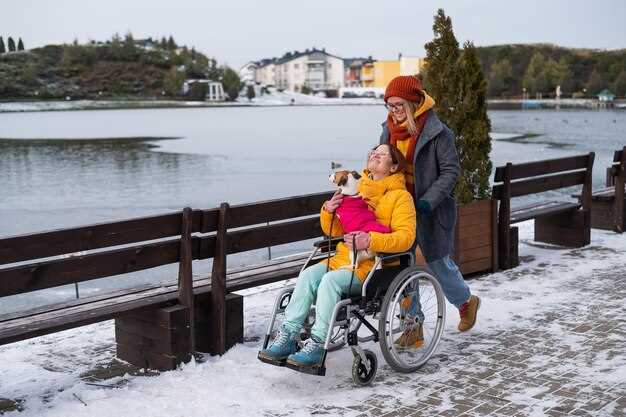 Accessible Moscow – Essential Travel Tips for Travelers with Disabilities in 2025">
Accessible Moscow – Essential Travel Tips for Travelers with Disabilities in 2025">


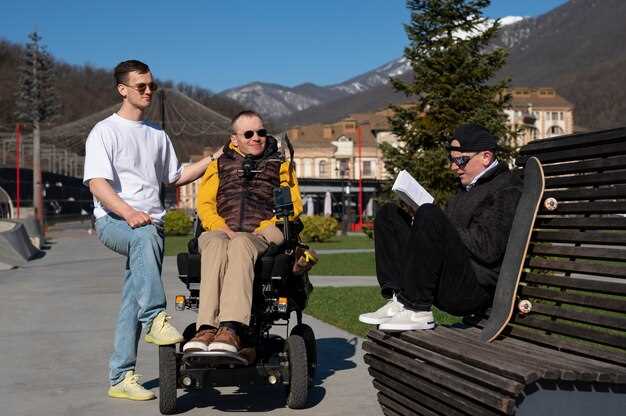
 Sports in Moscow – A Comprehensive Guide to Venues, Teams, and Major Events">
Sports in Moscow – A Comprehensive Guide to Venues, Teams, and Major Events">
 Marina Chetner – Biography, Career Highlights, and Latest News">
Marina Chetner – Biography, Career Highlights, and Latest News">
 Frequently Asked Questions (FAQ) – The Essential Guide to Common Questions">
Frequently Asked Questions (FAQ) – The Essential Guide to Common Questions">
 Best Restaurants and Bars – A Comprehensive Guide to Food, Drinks and Nightlife">
Best Restaurants and Bars – A Comprehensive Guide to Food, Drinks and Nightlife">
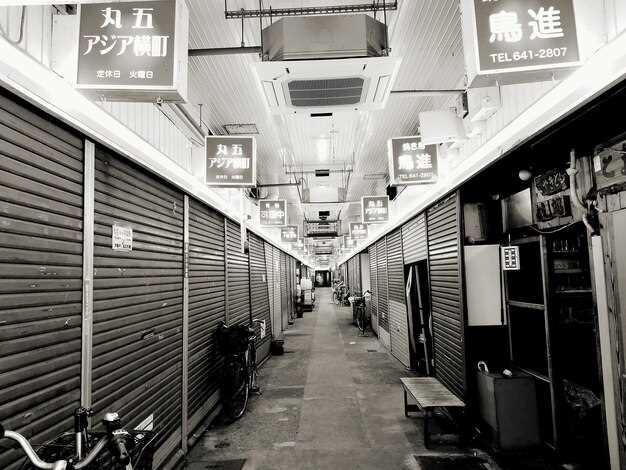 Station Lockers in Japan – A Comprehensive Guide for Travelers">
Station Lockers in Japan – A Comprehensive Guide for Travelers">
 Best Russia Tours 2019 | Russia Travel with ExploRussia">
Best Russia Tours 2019 | Russia Travel with ExploRussia">
 How Safe Is Moscow Moscow Forum? Safety Tips and What to Expect">
How Safe Is Moscow Moscow Forum? Safety Tips and What to Expect">
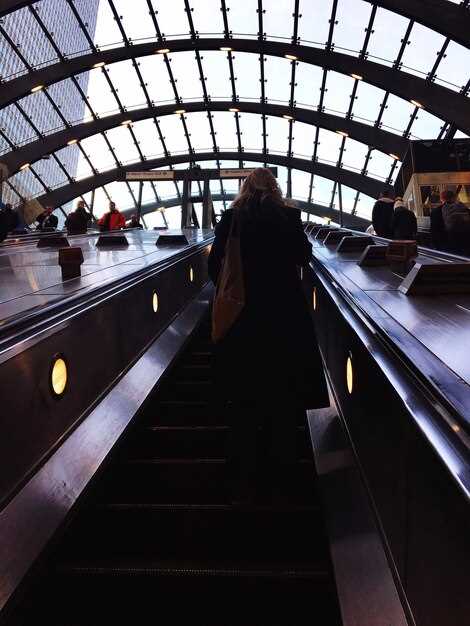 Sheremetyevo Airport After Midnight – How to Get to Moscow City Center – Moscow Forum">
Sheremetyevo Airport After Midnight – How to Get to Moscow City Center – Moscow Forum">
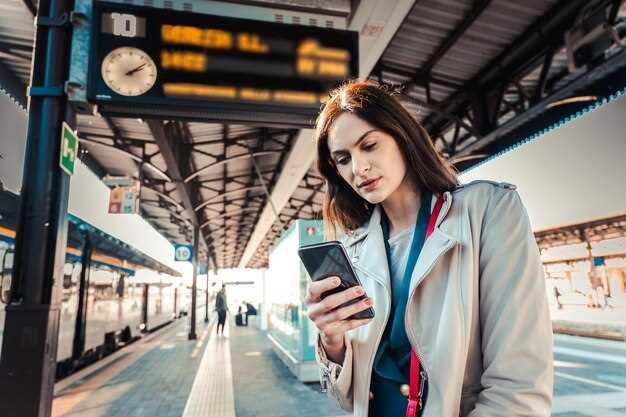 Trains from Moscow – Schedules, Routes, and Ticketing Tips">
Trains from Moscow – Schedules, Routes, and Ticketing Tips">